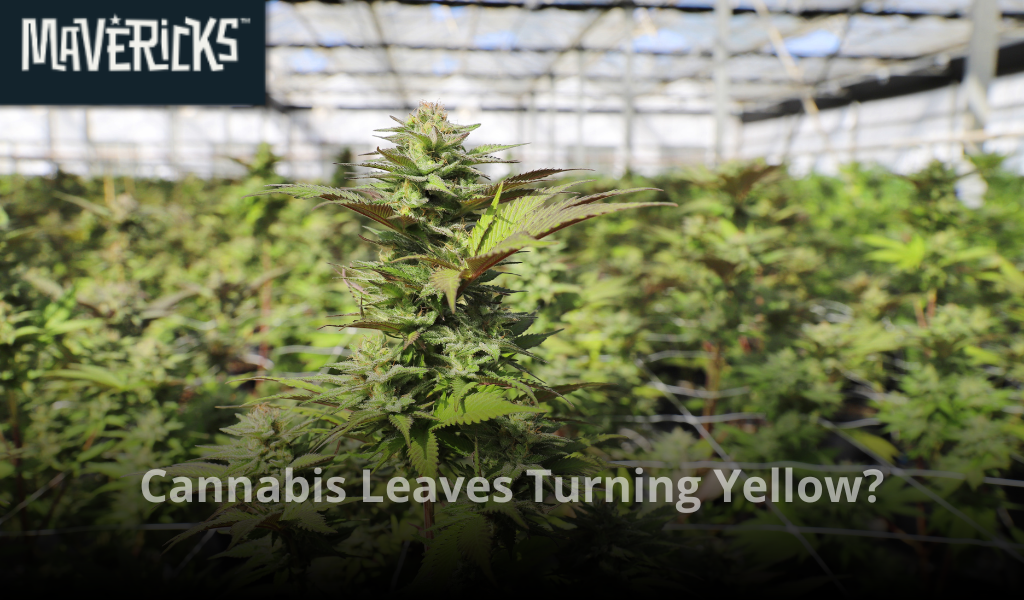Yellowing leaves, or chlorosis, in cannabis plants can be alarming. Understanding the underlying causes is crucial for effective treatment and prevention. This guide delves into common reasons for yellowing leaves and offers practical solutions to restore plant health. If you're just getting started, check out our feminized cannabis seeds or high-yield strains to grow healthy and resilient plants.
Common Causes of Yellowing Cannabis Leaves
1. Nutrient Deficiencies
Nutrient imbalances are a primary cause of yellow leaves. Deficiencies in macro and micronutrients affect the plant’s ability to photosynthesize and develop properly.
-
Nitrogen Deficiency: Older leaves turn yellow and fall off. This is the most common deficiency in cannabis and occurs when nitrogen is mobilized to support new growth.
-
Iron Deficiency: New leaves show yellowing while the veins remain green (interveinal chlorosis). Iron deficiency is often caused by incorrect pH rather than true lack of iron.
-
Magnesium Deficiency: Affects lower, older leaves first. Symptoms include interveinal yellowing, leaf curling, and sometimes brown spots.
-
Calcium Deficiency: Shows as localized necrosis, curling leaf tips, and stunted root development.
Solution: Use a full-spectrum cannabis fertilizer. Consider adding specific supplements such as Cal-Mag. Maintain a regular feeding schedule adjusted to the plant’s growth stage.
2. Improper Watering
Cannabis plants need a well-regulated watering routine. Both over and underwatering can cause leaves to yellow.
-
Overwatering: Saturates the root zone, limiting oxygen availability. Symptoms include droopy yellow leaves and root rot.
-
Underwatering: Leaves become dry, brittle, and yellow due to dehydration.
Solution: Water when the top inch of soil feels dry. Ensure pots have adequate drainage holes. Use moisture meters if necessary.
3. pH Imbalance
Nutrient lockout often results from improper pH levels, even when nutrients are present in the soil or solution.
-
Soil pH: Should be maintained between 6.0 and 7.0.
-
Hydroponic pH: Should be maintained between 5.5 and 6.5.
Solution: Test runoff or reservoir pH regularly. Use pH up/down solutions to adjust. Buffered soil mixes can help stabilize pH for soil growers.
4. Light Stress
Light intensity plays a major role in photosynthesis. When too intense or too weak, leaves may yellow and die.
-
Light Burn: Occurs when lights are too close. Upper leaves bleach or curl.
-
Light Deficiency: Results in pale or yellowing lower leaves due to lack of exposure.
Solution: Adjust light distance based on light type (LED, HID, CFL). Rotate plants and prune lower foliage to improve penetration.
5. Pests and Diseases
Cannabis is susceptible to various pests and pathogens that cause leaf yellowing.
-
Spider Mites: Tiny pests that leave yellow stippling on leaves.
-
Fungus Gnats: Larvae attack roots, causing yellowing and stunted growth.
-
Root Rot: Caused by Pythium or Fusarium fungi. Leads to soft, dark roots and yellowing leaves.
-
Powdery Mildew: May begin as yellow spots under leaves before developing into white fungal patches.
Solution: Apply organic pesticides like neem oil or predatory mites. Use microbial inoculants to boost root health. Improve airflow and humidity control to prevent fungal outbreaks.
6. Environmental Stress
Cannabis thrives in stable conditions. Stress from external factors can cause yellowing.
-
High Temperatures: Above 85°F (29°C) may cause nutrient uptake issues and chlorosis.
-
Low Temperatures: Below 60°F (15°C) can slow down metabolism.
-
Humidity Swings: Inconsistent VPD (vapor pressure deficit) impairs transpiration.
Solution: Maintain temps between 70–80°F (21–27°C). Monitor RH and VPD with a grow room controller.
Diagnosing Based on Growth Stage
Seedling Stage
Yellowing at this stage usually indicates overwatering, lack of light, or poor soil quality.
Vegetative Stage
Nutrient deficiencies become more apparent here. Rapid growth demands nitrogen and magnesium.
Flowering Stage
Lower leaves may naturally yellow, but widespread yellowing suggests deficiencies, overfeeding, or stress.
Pro Tip: Always diagnose from the bottom up—check roots, media, and environment before altering nutrients.
When Yellowing Is Normal
Some yellowing is part of a healthy life cycle:
-
Late in flowering, cannabis plants reabsorb nutrients from older leaves.
-
One or two yellow leaves do not always indicate a problem.
However, if yellowing spreads rapidly or affects new growth, it’s a red flag.
Preventative Measures
-
Routine Checks: Walk your garden daily. Check under leaves, soil, stems, and roots when possible.
-
Integrated Pest Management: Introduce companion plants, beneficial insects, or neem oil as preventive care.
-
Flush Schedule: Flush your medium every few weeks to prevent salt buildup.
-
Resilient Genetics: Choose hardy strains that are less prone to deficiencies or stress. Our easy-to-grow strains are a great starting point.
Case Study: Indoor vs Outdoor Yellowing
Indoor growers may face yellowing from light burn or humidity issues. Outdoor growers deal with pests and weather fluctuations. For example:
-
An indoor grower in Colorado solved nitrogen deficiency by switching to a balanced veg fertilizer with added iron chelate.
-
An outdoor grower in Northern California mitigated yellowing caused by rootbound plants by transplanting into larger pots and adding compost tea.
Learning from real grow scenarios can help you anticipate and correct issues early.
Advanced Troubleshooting Tips
-
Leaf Tissue Analysis: Send samples to a lab to confirm specific deficiencies.
-
Soil Testing: Analyze your growing medium for nutrient levels, salt content, and pH.
-
Microbial Additives: Products containing beneficial fungi (e.g., mycorrhizae) or bacteria (e.g., Bacillus subtilis) support nutrient absorption.
-
Foliar Sprays: Apply magnesium sulfate (Epsom salt) or kelp extract during early symptoms.
Yellowing cannabis leaves signal a problem but also provide a roadmap to resolution. By identifying the cause—whether nutrient, environmental, or biological—you can implement targeted solutions. Consistent monitoring, preventive practices, and investing in robust genetics will safeguard your grow.
Ready to start with stronger plants from the beginning? Explore Mavericks Genetics USA for premium, stable cannabis seeds bred for resilience and yield.

Share:
10 Ways to Germinate Cannabis Seeds: A Comprehensive Guide